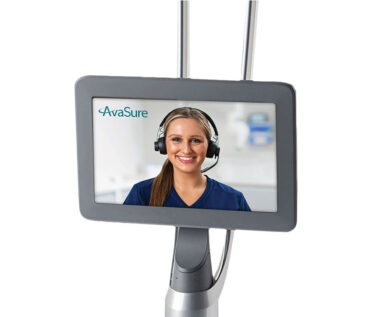Smart Tools for Patient Safety
- By BSTQ Staff
PATIENT SAFETY remains a nationwide problem. Medication mix-ups, misdiagnoses, surgical errors, sepsis — the list of concerns could go on. The Joint Commission updates its National Safety Goals every year based on the top patient safety risks, and two sources of patient harm consistently appear on the list as top causes of patient harm: patient falls and hospital-acquired infections (HAIs).
Patient falls are the most common adverse events reported in hospitals. Between 700,000 to one million patient falls occur each year, resulting in 250,000 injuries and some 11,000 deaths. Reasons for the falls are as diverse as the patients that experience them: limited mobility; impaired judgment; unfamiliar environments; varying fall prevention strategies.1 Identifying high fall risk patients and responding quickly when a fall event occurs is easier said than done. High patient volume, staff shortages and burnout make it hard to keep an eye on all patients at all times.
According to the Centers for Disease Control and Prevention (CDC), more than 99,000 deaths each year are related to HAIs, but proper, consistent hand hygiene (washing hands with soap and water, using alcohol-based hand sanitizer and performing surgical hand antisepsis) can reduce this number.2 In fact, 70 percent of infections could be prevented if healthcare workers followed CDC’s recommended protocols. CDC says healthcare workers may need to clean their hands as many as 100 times during a single shift, but adherence to this recommendation is low.3,4
What can hospitals do to help lower the burden of falls and improve hand hygiene compliance? Here are two innovative smart tools designed to help.
AvaSure TeleSitter Solution
AvaSure’s TeleSitter Solution is an artificial intelligence-powered fall and elopement detection solution that provides automatic alerts to healthcare workers when patients get out of bed. Computer vision and video technology work together to alert workers to potential falls and other high-risk events so clinicians can act fast when patients need them. TeleSitter makes it possible for one observer to monitor 16 patients at once. The high-resolution cameras equipped with 10x optical zoom provide a comprehensive view of hospital rooms, detect potential risk before it happens and, according to AvaSure, reduce adverse events by more than 50 percent. For more information, visit avasure.com/telesitter.
Vitalacy Automated Hand Hygiene Monitoring
The most complete solution to monitor and improve hand hygiene habits, Vitalacy’s automated hand hygiene monitoring system enforces compliance by tracking how often healthcare workers clean their hands either with soap and water or hand sanitizer. The solution’s 24/7 capabilities enable hospitals to meet hand hygiene practice standards while providing budget-friendly and upgradeable hand options, including:
- The SmartBadge, which clips to clothing and can be worn with clinician identification badges.
- The SmartClip, which gives realtime reminders at point-of-care. It can be clipped to a healthcare provider’s shirt.
- The SmartBand, which gives realtime reminders at point-of-care and coaches wash duration. It includes silent visual and vibration reminders, works with current dispensers and is easy to integrate into everyday use. It is worn around the wrist.
Each hand hygiene monitoring system comes with the Vitalacy dashboard, which enables easy viewing of all hand hygiene compliance data. Data can be sorted to view reports on individuals, units, departments or the entire building. For more information and to schedule a demo, visit vitalacy.com/automated-hand-hygiene-monitoring-technology.
References
- LeLaurin, JH, Shorr, RI. Preventing Falls in Hospitalized Patients: State of the Science. Clinics in Geriatric Medicine, 2019 May;35(2):273-283. Accessed at pmc.ncbi.nlm.nih.gov/articles/PMC6446937.
- Morgan, Daniel J, Lomotan, LL, Agnes, K, et al. Characteristics of Healthcare-Associated Infections Contributing to Unexpected In-Hospital Deaths. Infection Control Hospital Epidemiology, 2010 Aug;31(8):864-6. Accessed at pmc.ncbi.nlm.nih.gov/articles/PMC3528178.
- Centers for Disease Control and Prevention. Clinical Safety: Hand Hygiene for Healthcare Workers. Accessed at www.cdc.gov/clean-hands/hcp/clinical-safety/index.html.
- Armstrong-Novak, J, Juan, HY, Cooper, K, Bailey, P. Healthcare Personnel Hand Hygiene Compliance: Are We There Yet? Current Infectious Disease Report, 2023 May;26:1-7 Accessed at pmc.ncbi.nlm.nih.gov/articles/PMC10213575.
